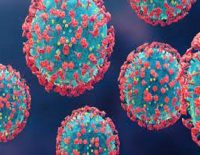Doctors remove 6.5 CMS tumor from food pipe by endoscopy

A 30-year-old man has been given a new lease of life after doctors in a hospital removed a 6.5cm tumour from his food pipe through an endoscopy. The patient had been admitted to the hospital with difficulty in swallowing. However, after investigations doctors found a large tumor of the size of 6.5 cms, bulging into the patient’s food pipe.
Prof. Anil Arora, Chairman, Institute of Liver Gastroenterology & Pancreatico Biliary Sciences, Sir Ganga Ram Hospital, where the surgery has been conducted, said, “We recently removed a large submucosal tumor of 6.5 cm in size from the foodpipe (esophageal leiomyoma-A tumor arising from the muscular layer of esophagus and protruding into the lumen causing dysphagia) in a 30 year old male patient presenting with difficulty in swallowing”.
Prof Arora said further, “ To the best of our knowledge, this was one of the largest tumor, removed endoscopically, in India. This procedure is known as submucosal tunneling and endoscopic resection (STER). These types of large tumors are traditionally removed by surgery which has far more morbidity, is more expansive and is associated with longer hospital stay”.
He added further that Endoscopic removal of large tumor is a challenging task. Generally regular oval shaped smooth esophageal tumor up to 3 cm size can be removed endoscopically by expert endoscopist but in this case tumor was more than 6 cm in size with lobulated irregular pear shaped configuration. Irregular shape makes it difficult to separate the tumor from all layers of food pipe, he added.
Doctors said that the challenge was the sheer size of the tumor as it created hurdles not only in mobilizing it out of submucosal tunnel into esophageal lumen but also in getting it out from esophagus via throat through mouth. “Once tumor got separated, we were able to scoop the tumor in lumen of esophagus from the submucosal tunnel behind the esophageal wall into the esophageal lumen”, said Dr. Shivam Khare.
However, the tumor was successfully retrieved from the mouth and the patient was discharged after two days with gradual resumption of the normal diet.








Comments